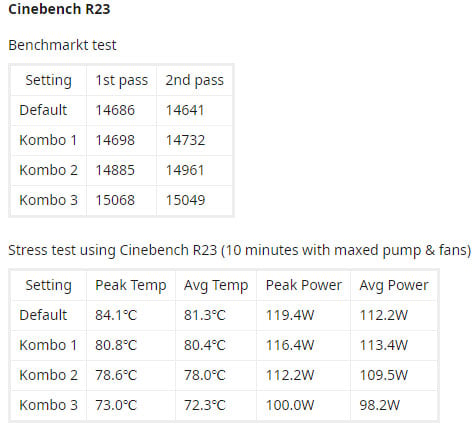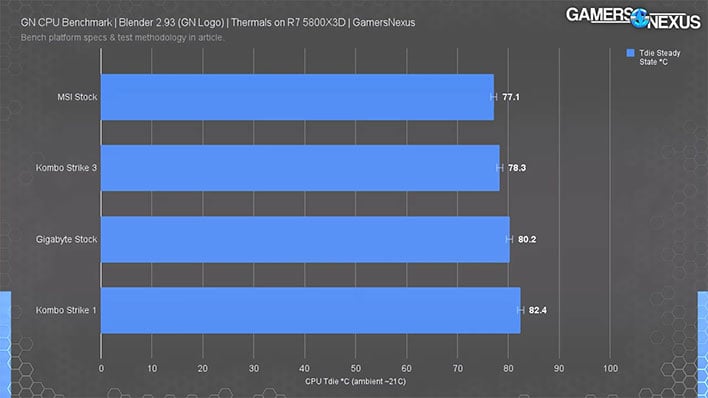MSI Kombo Strike For Ryzen 7 5800X3D Shows Mixed Results In Early Benchmarks

The Ryzen 7 5800X3D is an enticing chip for gamers because AMD stacked on a pile of 3D V-cache, effectively greatly increasing the amount of L3 cache (to 96MB total). More L3 cache can have a measurable impact in gaming, as we showed in our Ryzen 7 5800X3D review. The downside is AMD also locked the CPU so that technically it can't be overclocked. MSI has implemented a sort of workaround with its Kombo Strike feature that's in beta, and some early tests show mixed results.
Before we get to that, let's talk about the overclocking lock. This is the first consumer desktop CPU to employ stacked 3D V-cache, and the chip's packaging technology does not offer the same voltage and frequency scaling as AMD's conventional chiplet implementations. Hence it's optimized and locked (though the Infinity Fabric and memory interface remain unlocked).
Last week MSI began pushing out beta BIOS updates with its new Kombo Strike feature in tow. At the time it was not crystal clear exactly what it does, only that it has three settings labeled 1, 2, and 3 (or can be disabled altogether), and purportedly offers to increase performance by up to 5 percent. Level 3 is supposed to offer the biggest boost, and MSI notes you should "make sure [your] CPU cooler is strong enough to handle the heat."
Well, Reddit user Mannekino recently posted some interesting results after playing around with the Kombo Strike settings on their MEG B550 Unify motherboard. Cinebench R23, 3DMark Time Spy, and Superposition 1080p Extreme all showed a small performance gain when enabling Kombo Strike Level 3 versus disabling the feature. More surprising, however, were the supposed drop in temps. Here's a look...
According to Mannekino, power and temps both decreased with the Level 3 setting, while performance increased by 2.6-2.8 percent. Gaming benchmarks didn't yield any real performance gains, but overall, they concluded that Kombo Strike was delivering "the same/slightly better performance with way lower temp and power consumption."
Seems like a no-brainer to enable if if it's an option, right? Not so fast. Steve Burke at Gamers Nexus posted a video today that paints a different picture, and one that is more in line with what you might expect. He explains that Kombo Strike basically circumvents AMD's built-in protections on the Ryzen 7 5800X3D to offer a form of overclocking.
What it really boils down to is overvolting to boost clocks a little bit. Burke tested the feature and compared the results both to stock settings, and to a Gigabyte X570 Master motherboard, which runs a higher vCore out of the gate.
What he found is that Level 1 appears to apply too much voltage for the frequency, likely because of a coding error—it could be pulling the wrong values from a lookup table. Level 3 is more interesting anyway because that's where the biggest performance gain is supposed to occur. You can see the temperature differences at idle in the graph above.
You can check out the full video for all the details (it's about 16 minutes long), but summed up, Kombo Strike delivered up a 5 percent performance bump in production workloads compared to having it disabled, and up to 3 percent over the stock settings on the Gigabyte platform. In gaming, the results were negligible. The cost to temps is around 2-4C, depending on the workload.
So, there could be some minor performance gains to be had, at the expense of temps. However, at this point in time it comes with the unknowns of running a beta BIOS (and the hassle of updating), and just isn't worth the trouble for gaming.



